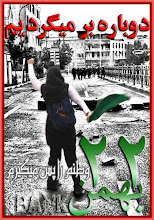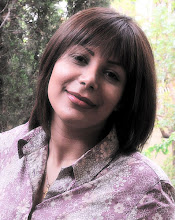‘So, c’mon,’ says Sophie, drawing herself up to her full height at the head of the table where she’s waxing some pots in readiness for their next layer of slip, ‘what ARE they going to do for Crafts people?’ ‘They’ in this instance, were the Crafts Council.
I’d been to see Rosy Greenlees, Director of the Crafts Council, to ask that very question. What follows is an account of the interview and my reflections on the whole.
‘What is the Crafts Council for?’ Greenlees supplies a well-rehearsed answer: ‘it’s-a-national-agency-which-represents craft-across-all-disciplines-and-across-all-nations-of-the-UK.’ She rattles off the opening volley of words with fluency and a touch of force. There’s much talk of relationships, partnerships, craft in the wider agenda and so on. It’s government speak and turbo-charged. ‘The sector needs an advocate,’ she declares, almost with a flourish… ‘Sector’. This means we’re constituted politically, we’ve become part of political discourse which suggests we need to become active within that discourse. Not to everyone’s taste, I know, but I’ll come back to that.
Translating government-speakAn example of ‘advocacy’ in this context was the Crafts Council’s involvement in drafting a government document, ‘Creative Britain’, about creative industries in the UK. You can download and read – all 81 pages –
here. It’s compulsory reading for anyone concerned with funding – especially what gets funded and why. The point is that the Craft Council was involved in drafting this beast, which is in effect a policy doc from the Dept. of Culture Media and Sport, and means that concerns of ‘the sector’, that’s us remember, what we need to function, be creative and THRIVE, are represented in the document
The partnerships amount to the various Crafts Council projects, funding and support schemes. Most of these can be found on the website under ‘learning and support'
here, but those with the Esmee Fairbairn Foundation and Architecture Centre Network are easy to miss: go to ‘about us’ then go to ‘partnerships and initiatives.’ The focus of the EFF projects is on ‘development of a business plan; workshops and craft fellowships for mid-career makers; research and creation of a market development strategy and other initiatives.’ So far they’re based in the North East, South West and West Midlands.
Hidden Art, in Cornwall, was also one of these projects. It has a fantastic website with much information about going digital and various training and development schemes in partnership with University College Falmouth which has an excellent research cluster related to all matters digital.
Funding Schemes and Projects It is now the task of the Arts Council to fund craft. The CC has some specific projects, such as those outlined above; it still has the ‘Setting up Grant’, now ‘the Development Grant’, for people setting up full time in their own studio space. It has other projects such as ‘Next Move’, also aimed at new makers but concentrating on residencies and it has ‘Spark Plug’, which is for curatorial projects and which might include makers, but must involve at least one experienced curator. Projects tailored specifically at mid career makers are few: there are two fellowships, one at the V&A, one in the South West, and they are VERY specific, and intending to showcase the CCs idea of ‘the gold standard.’ I’ll return to this ‘gold standard’ business later. All the information you need about the schemes, meanwhile, is on the website.
Shop, Gallery, Building, Magazine, Website. The new, and vastly improved, Crafts Council website is part of their strategy to be a resource and information centre. It aims to be ‘about the sector, not just the Crafts Council’. This is a significant difference. I would suggest that some degree of interactivity would help to keep communication channels open with makers and other members of ‘the sector’.
The Crafts Council building in London is still there but has no gallery or shop. For the exhibitions programmes, for example, the aim is to make connections with galleries and museums nationally and curate shows with them, with an emphasis on touring. The purpose is to spread funding, resources and overall visibility for craft outwards from London to ‘the regions’. The London gallery space is, to some extent, replaced by working and producing shows with the V&A. Out of the Ordinary is said to have had audience figures of over 100,000 at the V&A alone and is now touring. Although there will undoubtedly be fewer shows, they will have, according to Greenlees, a far greater impact. So the exhibition programme becomes national, and to some extent international. The website and Crafts Magazine are also part of this get-it-away-from-a-single-building-in-London strategy. However, ‘impact’ is a notoriously difficult thing to measure, it also presupposes we know what it is we are measuring in the first place.
EducationCraft in education seems to be an important part of the Crafts Council’s strategy. They’ve been talking to OFSTED, the schools inspectorate; NSEAD, which promotes art, craft and design in schools and CHEAD, which represents art and design in higher education. There is a plan to extend apprenticeship schemes to include postgraduates. This would certainly help to ameliorate some the problems of skills-loss which will come from the reduction of dedicated ceramics courses for example. The results of all this talking and partnership-ing remains to be seen, but at least there’s someone trying to ensure a presence for craft skills and processes at all levels of education. I asked for a comment on the situation in Scotland, which now has no ceramics course at degree level, and will shortly be losing the glass course in Edinburgh, by all accounts. Greenlees was sympathetic, but was concerned not to ‘appear as though we’re living in the past.’ Craft is ‘dynamic, innovative, and moves,’ she said, while acknowledging that a rationale that claims that this can’t include ceramics would, necessarily, be flawed.
The Public Face of Craft‘So, five years from now, what do you want the Crafts Council to have achieved?’
‘I want people to “get” craft.’
It’s a big ambition, but there are some outstanding questions. How is craft to be mediated? Along with the exhibitions programme, Origin and Collect are the mainstays. These are Crafts’ public face.
How does the Crafts Council define craft?
‘We don’t,’ but ‘innovative use of materials and processes’ was a much repeated phrase. ‘Innovative’ is probably the main buzz word I’m encountering at the moment. It’s endlessly repeated in Creative Britain, also in Seona Reid’s paper, ‘Unleashing the Potential of the Scottish Creative Sector,’ (Reid is head of Glasgow School of Art where the last ceramics degree course is closing), in Greenlees’s commentary and almost to the point of self parody in NESTA’s latest policy statement but as with ‘gold standard’ there is no indication of how this is defined or by whom. ‘Innovative’ is particularly tricky, because it has such a strong speculative element to it anyway. How do you measure innovation?
I remarked that, in my travels in Tottenham, I had encountered a group of Kurdish women from Turkey who are exemplary sewers, knitters, embroiderers and makers of many wondrous fine things in fabric and fibre. They make to sell. They need the money. Would the Crafts Council support them, for example? Pause…..mmmmm, not sure. Bla Bla innovative. Well maybe they could demonstrate appropriate signs of innovation but, somehow, I had a feeling that my Kurdish ladies were not what the Ministry of Craft were looking for. One has to ask why not, they are part of ‘the sector’, surely?
The Jerwood prize for the applied arts appears to have departed for the time being. Greenlees said it would continue but only with the Jerwood, not in conjunction with the Crafts Council. It provided some much needed, if not very good quality, media coverage, so how is it to be replaced or expanded? The Jerwood website is not very revealing at the moment.
By constituting craft as primarily about skills and process, and locating it squarely in education, training, and professional development and support, the Crafts Council ensures a presence and a plausible way of craft being ‘got’. Whether it’s craft as you know it or want it, and quite who is included and who is not, is another matter entirely. The C Word will deal with that question, ‘the gold standard’, ‘innovation’ and other matters in part 2.























































